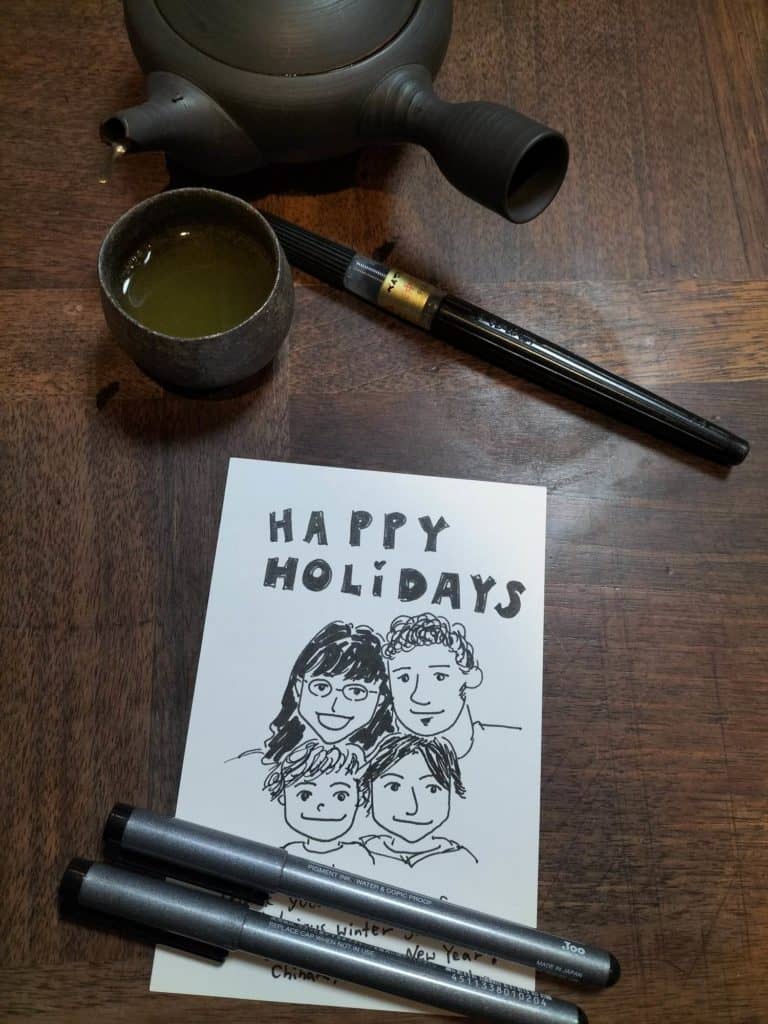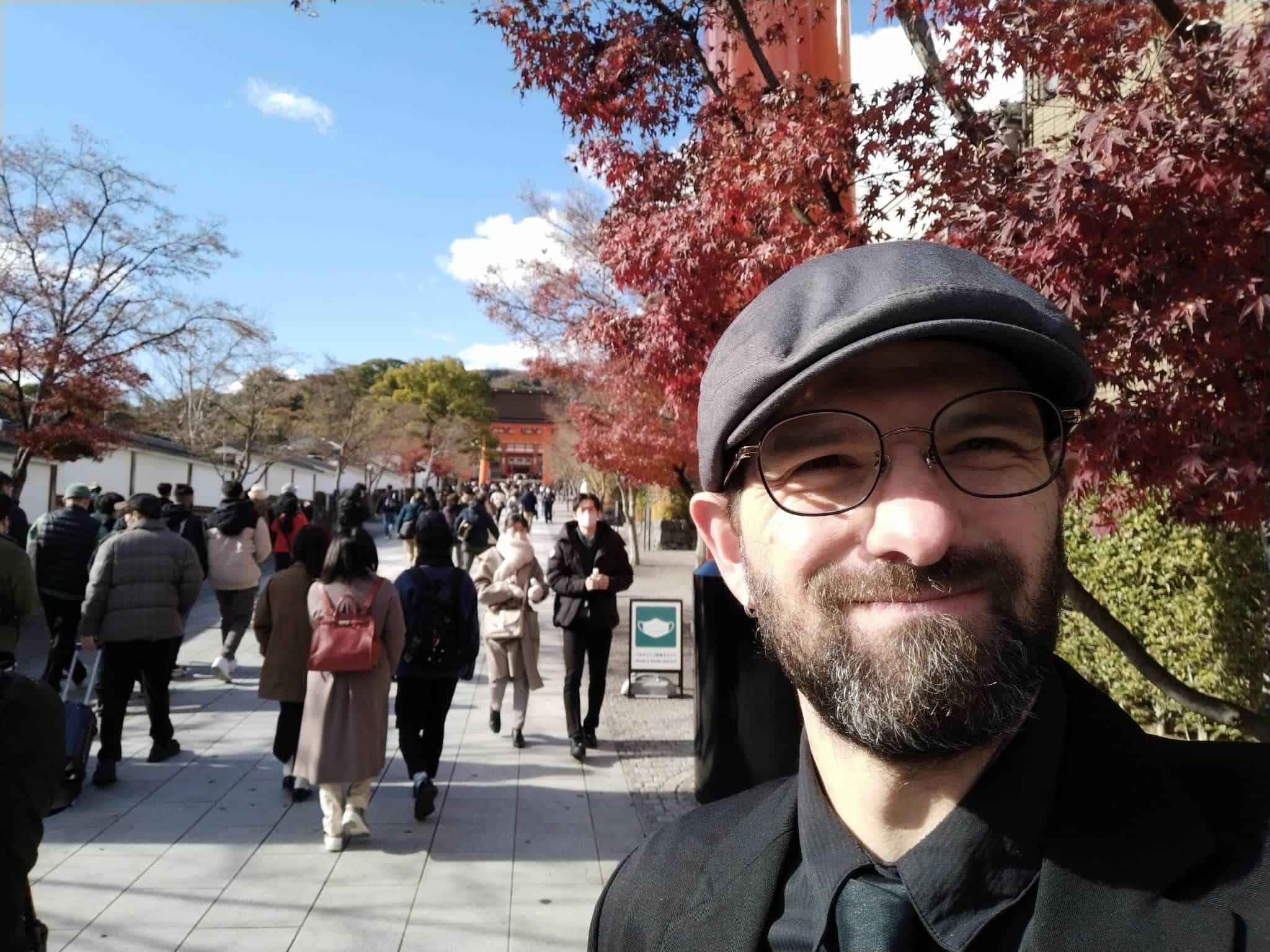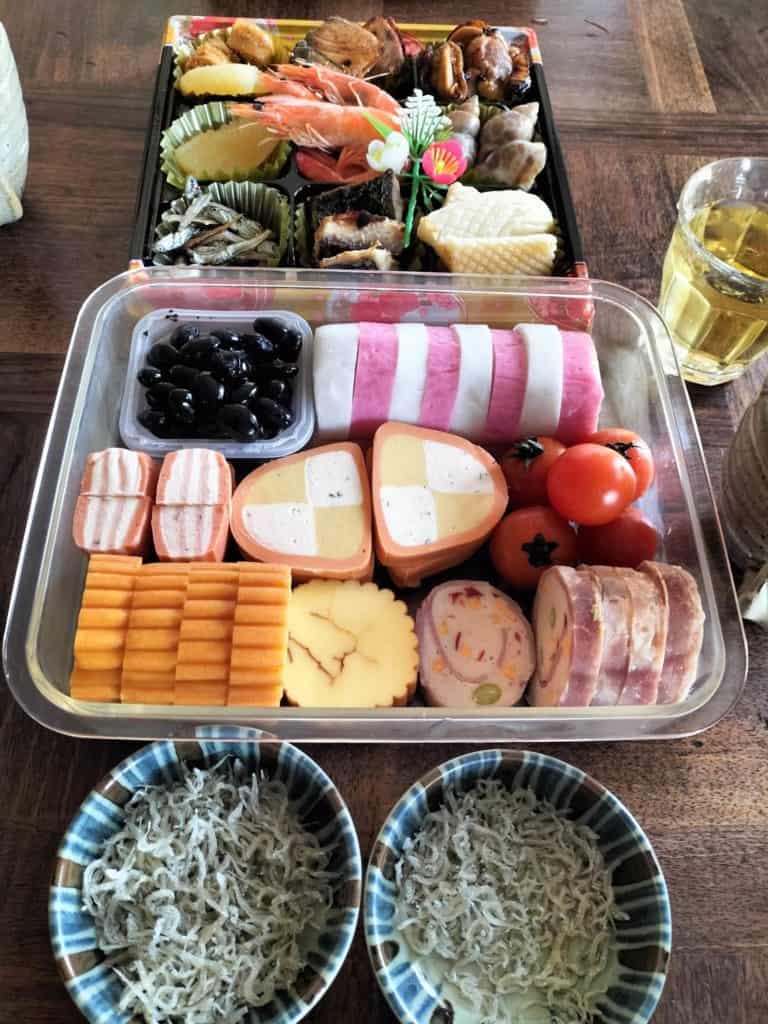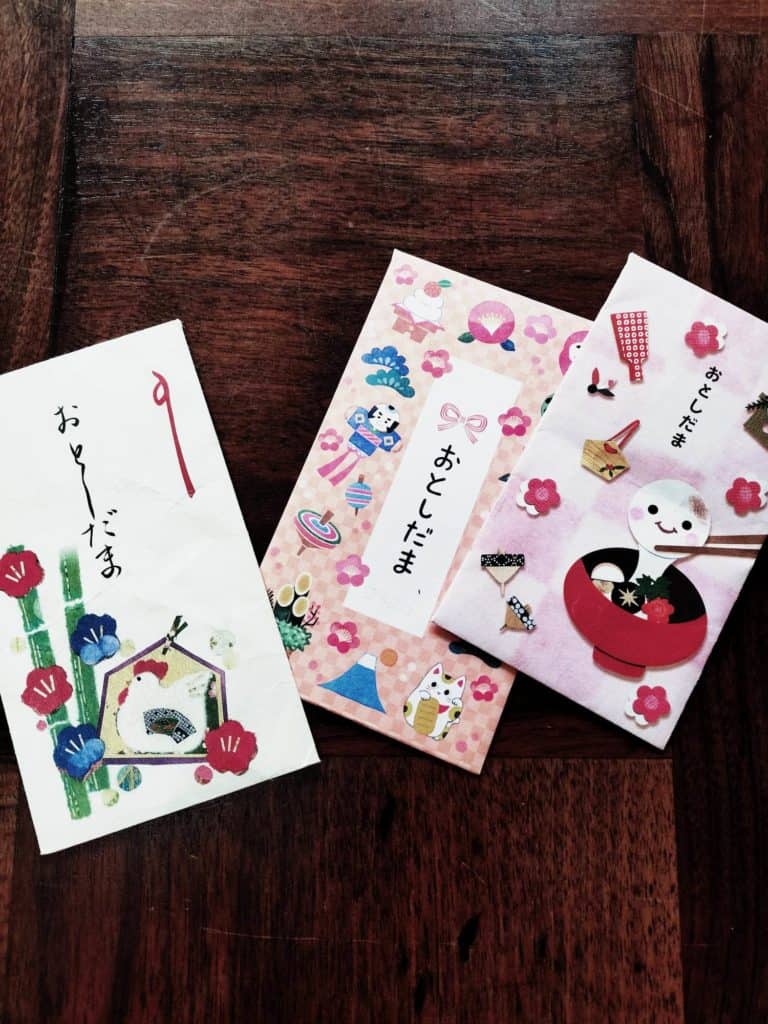【英語で説明】日本のお正月
スミス英会話大津校ブログ
日本のお正月
明けましておめでとうございます。Happy New Year!
「日出ずる国」ともいわれる日本で、お正月は間違いなく1年で一番重要な日です。多くの人が実家に帰省をして、お正月を家族と一緒に過ごし、おいしいご飯を食べて伝統の行事を行います。私は、家族で集まってゆっくりしたり、ボードゲームや近況の話しをしたりできるお正月が大好きです。
日本独自の行事や習慣がある“お正月”について、英語で説明してみましょう!
行事の説明についての日本文を英訳してみてください。先生の書いた英訳を日本文の下につけています。
年末
日本のお正月準備は12月から始まり、年賀状のデザインや印刷を始めます。
年賀状
New Year’s Cards:
「個人では友人や家族に年賀状を送り、多くが家族写真や、旅行、出産、そのほか個人的または家族の出来事などその年の大きなイベントの写真を添えます。会社では顧客に年賀状を送り、日頃からの贔屓に感謝を伝えます。年賀状を1月1日に配達してもらうためには12月25日までにポストに投函する必要があります。しかし、その年に逝去した家族がいる場合は年賀状を出しません、代わりに喪中であることを知らせる葉書を出します。」
先生の英文:
Individuals send out cards to friends and family, often including a family shot or pictures of the major events of the year, such as trips or births or other personal or family milestones. Companies send out cards to their loyal customers, thanking them for their patronage. These cards need to be in the mailbox by December 25th to guarantee delivery on January 1st. However, if you have suffered the passing of a family member during the year, you do not send out New Year’s cards, but instead send out a card announcing that you are in a period of mourning.

忘年会
End-of-year party:
「多くの会社、チーム、クラブ活動やその他グループが忘年会を開催します。これは通常レストランや飲み屋で開かれ、職場の同僚と気軽に楽しめる、クラブ活動の外で会える、または古い友人と集まれる同窓会のような機会になります。」
先生の英文:
Most companies, team, clubs or other social groups will host end-of-year parties. These are usually held at a local restaurant or pub and are a chance for coworkers to enjoy casual time together, or for clubs to meet outside of their usual activity, or for old friends to get together (like a class reunion).

年始準備
買い物の時間です。年末年始の食事準備のために家族で買い物にでかけます。日本のお正月には素晴らしい伝統がたくさんあり、その準備が鍵となります。最も重要なのは、お正月の数日間はなるべく少ない準備時間で豪華なご飯を楽しめるための用意をしておくことです。お正月の食事についてはブログ後半でご紹介します。そして興味深いと思ったのが、スーパーマーケットは閉まるのは1年のうち1月の1日,2日(場所によっては12月31日も)くらいだということです。

大晦日
New Year’s Eve:
「家族が集まりご飯を食べてゆっくり過ごしてテレビを見ます。日本のお正月はテレビの特別番組の季節です。大晦日のハイライトはその年に活躍した歌手達の音楽番組です。日本で有名なスター達がヒット曲をパフォーマンスするスペシャル番組がNHKで5時間生放送されます。その後23時45分には多くのチャンネルでカウントダウン番組が流れ、深夜からは前の年と新しい1年についての様々な番組が放送されます。1月1日2日はお笑い番組、駅伝、クイズ番組、トーク番組やスポーツイベントが多くなります。多くの人は、豪華なご飯を食べテレビを見てゆっくりする時期です。」
先生の英文:
Families gather to eat and relax and watch TV. Japanese New Year’s is a time for special TV programs. New Year’s eve is highlighted by a music program of the most popular musicians of the year. This is a 5 hour NHK Special live stage where the biggest stars in Japan can perform their hits. Then at 23:45 every station has some countdown program and from midnight onwards various programs discuss the previous year and the year to come. January 1st and 2nd feature a comedy duo challenge, university marathon relay, quiz shows, talk shows and other sports events. Most people relax during this time, eating sumptuous dishes and watching TV.
元旦
First Shrine Visit of the Year:
「元旦の初詣は、日本の正しい新年の始め方を体験できるチャンスです。日本の人々は地元の神社に行って新しい年1年の健康と幸運を祈ります。学生は学校での成功を祈り、家族は子供たちや年長者の健康を、会社の社長や自営業の人はビジネスの成功を祈ります。関西で初詣に最も人気な神社は、京都にある伏見稲荷大社で初詣の3日間で250万人の参拝者が訪れます(これは、イスラム教徒の聖地メッカへの年間巡礼数と同じ数)!31日の12時に神社を訪れて新年を迎え参拝する人もいますし、1日の朝一番に参拝する人、2日や3日に参拝する人もいます。」
先生の英文:
The first shrine visit of the Japanese new year is a chance to start the year off right. People visit a local shrine to pray for health and fortune for the year to come. Students pray for success at school, families pray for the health of their newborns and seniors, company presidents and small business owners pray for a successful business year. The most popular shrine in Kansai is Fushimi Inari Shrine in Kyoto, which sees over 2.5 millions visitors during the first three days of the year (equaling the number of visitors for the annual Hajj Pilgrimmage in Mecca)! Some people visit a shrine at midnight on the 31st, to ring in the new year and then pray, other go to a shrine first thing in the morning of the first, still others go on the 2nd or 3rd.

お正月のご飯
お楽しみは一番後!お待たせしました、お正月の食事についてです。日本のお正月の中心は食事です。メインの食べ物を説明してみましょう。
年越しそば Toshi Koshi Soba:
「31日の夜に食べられる定番、この長いそばの麺は長生きと健康を象徴しています。多くがエビ天ぷらを乗せて、また京都ではにしんの甘露煮を乗せて食べられます。」
先生の英文:
Typically eaten on the evening of the 31st, these long buckwheat noodles symbolize long life and good health, as the buckwheat plan is hardy. Often they are eaten with a deep-fried shrimp or in Kyoto a piece of sweetened herring topping.
おせち Osechi Ryouri:
「上品で高級感のある入れ物にたくさんの種類の料理が入っています。これらの食材は通常値段の高い、高級食材が使われます。紅白の食材がよく使われますが、白は「清浄」赤は「慶び、魔除け」を表します。」
先生の英文:
An elegant and luxurious box filled with a variety of foods. These foods are usually expensive, as they are made with the best ingredients. Foods which are red and white are prefered, as white symbolizes purity and red symbolizes joy and good luck charm.
お雑煮 O-zoni:
「お雑煮はお餅の入ったスープです。私も大好きな伝統的な食事のひとつです、なぜなら地域によってたくさんの種類があるからです。京都のあたりは白味噌のスープが一般的ですが、九州では(大津校の生徒様の出身)醤油スープです。地域によっては甘いスープを好むためぜんざいのスープもあります。」
先生の英文:
Ozoni is a hot soup with mochi (pounded rice cakes). This is one of my favourite traditions, because there is such variety from region to region. Around Kyoto we typically have a white miso based soup, but in Kyushu (where one of my students is from) they have soy sauce based soup. Some areas prefer sweet soup and thus choose red bean soup(Zenzai).
甘酒 Amazake:
「甘酒はお米から作られたお正月を楽しめる飲み物です。お酒かと思いましたが、通常アルコールは入っていないので誰でも楽しむことができます。冷たくしても飲めますが、12月と1月の日本はとても寒いので、多くの人が温めて飲みます。神社やお寺に訪れた参拝者に無料で配られることも多いです。」
先生の英文:
Amazake is a traditional rice-based drink which is enjoyed at New Year’s time. Though it can contain alcohol, it usually doesn’t, so that everyone can enjoy it. It can be drunk cold, but December and January are quite chilly in Japan so most people enjoy drinking it hot. Shrines and temples often hand it out for free to people who have come to pray.

百貨店やレストランでオーダーする人も。
最後に
お年玉 Otoshidama:
「お年玉は金銭の贈り物で、伝統的に大人たちから子供へ贈られます。通常小さな封筒に入れて、両親、祖父母や伯父叔母から元旦に渡されます。”千円”と決めて一定の額をあげる人や、子供の年や学年に合わせた金額にする人がいます。当然、子供たちは大好きな伝統です!」
先生の英文:
Otoshidama are monetary gifts, traditionally given by elders to children. Usually given in a small envellope by parents, grandparents and aunts & uncles on new year’s day. Some people give a set amount, such as 1000 yen, others give an amount based on a child’s age or grade. Naturally, children love this tradition!

このブログが、お正月を英語で説明する手助けになることを願います。2023年も良い1年になりますように!
スミス英会話大津校 エドワード
エドワード先生が書いた英語版はこちら(English Here)
日本の年末年始についてのブログをもっと読む:
スミス英会話のブログを毎週お届けします!登録はこちら
無料体験レッスン (マンツーマン・完全予約制)のお問い合わせはコチラから!
日常英会話を学びたい方にはノーマル月謝制コースがおすすめ!
スミス英会話のFacebookをチェック!


Thanks for reading everyone. I hope students of English find this useful in discussing Japanese New Year’s culture in English.
Great summary of Japanese New Year customs, Edward! Well done!
I still give Otosidama to my children and my son-in-low who have become adults every year.Because my grandmother did the same and I think it was a very nice.